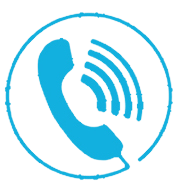وبلاگ
What is the liability to equity ratio of chester?
The numerator in above formula consists of total current and long-term liabilities and the denominator consists of total stockholders’ equity, including preferred stock, if any. Both the elements of the formula can be obtained from company’s balance sheet. Debt to equity ratio (also termed as debt equity ratio) is a long term solvency ratio that indicates the soundness of long-term financial policies of a company.
What is the liability to equity ratio of chester? select: 1 2.84 1.61 .31 4.35?
- However, a general rule of thumb is that a liability to equity ratio of less than 1 is considered to be healthy.
- Conversely, a low liability to equity ratio can indicate that a company is not using enough debt, which can limit its growth potential.
- Debt to equity ratio (also termed as debt equity ratio) is a long term solvency ratio that indicates the soundness of long-term financial policies of a company.
This ratio is a measure of a company’s financial leverage, and it is calculated by dividing the company’s total liabilities by its total equity. A high liability to equity ratio can indicate that a company is taking on too much debt, which can increase its risk of financial distress. The liability to equity ratio is a financial metric that measures the proportion of a company’s total liabilities to its total equity. It provides insights into the company’s financial leverage and its ability to meet its debt obligations. To calculate Chester’s ratio, we need to gather data on the company’s total liabilities and total equity from its financial statements.
What is the liability to equity ratio of chester?
In this article, we will discuss the liability to equity ratio in more detail, and we will provide a step-by-step guide to calculating this ratio for Chester. We will also discuss the factors that can influence a company’s liability to equity ratio, and we will compare Chester’s ratio to industry benchmarks. Petersen Trading Company has total liabilities of $937,500 and a debt to equity ratio of 1.25. The factors that can influence a company’s liability to equity ratio include the company’s industry, its size, its growth rate, and its profitability.
Factors Influencing Chester’s Liability to Equity Ratio, What is the liability to equity ratio of chester
Tracking Chester’s liability to equity ratio over time can reveal trends and identify potential areas of concern. A sudden increase in the ratio may indicate excessive debt accumulation, while a steady decline may suggest improved financial stability. Study the quick ratio definition, discover how to interpret the formula, and work through quick ratio examples.
Debt to equity ratio is calculated by dividing total liabilities by stockholder’s equity. A good liability to equity ratio varies depending on the industry in which a company operates. However, a general rule of thumb is that a liability to equity ratio of less than 1 is considered to be healthy.
Debt to equity ratio
Creditors generally like a low debt to equity ratio, because it ensures that the firm is not already heavily relying on debt which ultimately indicates a greater protection to their funds. A significantly low ratio may, however, also be found in companies that reluctant to take the advantage of debt financing for growth. To assess Chester’s financial income tax return 2020 health, it’s helpful to compare its liability to equity ratio to industry benchmarks. Conversely, a low liability to equity ratio can indicate that a company is not using enough debt, which can limit its growth potential. The lender of the loan requests you to compute the debt to equity ratio as a part of long-term solvency test of the company.
It shows the relation between the portion of assets financed by creditors and the portion of assets financed by stockholders. The liability to equity ratio measures the gearing risk or leverage of the company. It measure the degree to which a company is financing its operations with debt. Liquidity ratios show the short-term liquidity position of the company. A liquidity position means the ability of the company to pay short-term debts.




